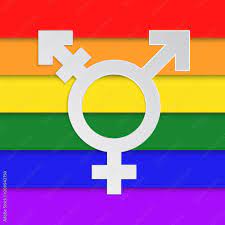Navigating the maze of gender identity can be challenging, especially when it comes to understanding terms like "gender dysphoria." The Diagnostic and Statistical Manual of Mental Disorders, Fifth Edition (DSM-5), offers guidance for mental health professionals in recognizing and diagnosing gender dysphoria. Here’s a closer look at what that means, from the basic definition to the implications of diagnosis and treatment.
Understanding the Basics of Gender Dysphoria in DSM-5
Gender dysphoria refers to the psychological distress that occurs when a person’s gender identity differs from the sex they were assigned at birth. This experience can lead to a range of emotional and mental health challenges, including anxiety, depression, and isolation. The DSM-5 provides a framework to better understand this condition, emphasizing that gender dysphoria is not a disorder in itself, but rather a recognition of the difficulties many may face when their identity doesn’t align with societal expectations.What Happens To Estrogen During MenopausePost Op Transsexual
The DSM-5 aims to validate the experiences of those with gender dysphoria while providing guidance for clinicians. It acknowledges the complex interplay of biological, environmental, and psychological factors that contribute to an individual’s sense of self. By framing gender dysphoria in a clinical context, the DSM-5 can help streamline pathways to support and care.
What is DSM-5 and Its Role in Mental Health?
The DSM-5 is published by the American Psychiatric Association and serves as a critical reference for mental health professionals. This manual categorizes mental disorders, offering standardized criteria for diagnosis. By laying out specific symptoms, the DSM-5 helps clinicians provide accurate assessments and develop effective treatment plans.
In the context of gender identity, the DSM-5 plays a significant role in promoting understanding and acceptance of diverse gender experiences. It serves as a resource for clinicians, aiding them in navigating complex discussions around gender identity and dysphoria. By doing so, the DSM-5 helps to reduce stigma and encourages a more compassionate approach to mental health care.
Key Criteria for Diagnosing Gender Dysphoria
To diagnose gender dysphoria, the DSM-5 outlines specific criteria that must be met. One key aspect is experiencing a marked incongruence between an individual’s experienced or expressed gender and the one assigned at birth. This discomfort must be persistent, lasting for at least six months, and cause significant distress or impairment in social, occupational, or other important areas of functioning.
Clinicians also look for accompanying symptoms, such as a strong desire to be of another gender, a strong dislike of one’s sexual anatomy, or a desire for the primary or secondary sex characteristics of another gender. Each of these criteria helps ensure that the diagnosis is both accurate and reflective of the individual’s unique experience.
The Importance of Symptoms in Gender Dysphoria
Symptoms of gender dysphoria can vary widely among individuals. Some may experience emotional distress related to their gender identity, while others might struggle with social stigma and misunderstanding from others. This diversity of symptoms underscores the importance of personalized assessment and care in addressing gender dysphoria.
Recognizing these symptoms is crucial for developing an appropriate treatment plan. Not only do they provide insight into the individual’s experience, but they also highlight the need for a supportive environment. Clinicians must approach each case with sensitivity, ensuring that patients feel heard and validated in their struggles.
Age Considerations: Kids, Teens, and Adults
The experience of gender dysphoria can manifest differently across various age groups. For children and adolescents, symptoms may include a strong preference for toys, games, and activities typically associated with another gender, as well as a desire to be recognized as that gender. It is important for parents and caregivers to approach these signs with understanding and support, as early intervention can help mitigate distress.
For adults, gender dysphoria may take on different forms, often intertwined with complex social and emotional issues. Adults might face challenges related to relationships, work, and societal acceptance. Understanding the age-specific nuances of gender dysphoria can enhance support strategies and foster a more inclusive environment for individuals across the lifespan.
Navigating the Diagnosis Process: What to Expect
The diagnosis process for gender dysphoria typically involves an initial consultation with a mental health professional who is experienced in gender identity issues. During this session, the clinician will take the time to understand the individual’s experiences and feelings, exploring their gender identity in a safe and supportive space. This initial dialogue is crucial in building trust and ensuring a thorough understanding of the individual’s situation.
After gathering information, the clinician may refer to the DSM-5 criteria to determine whether a diagnosis of gender dysphoria is appropriate. It’s essential for individuals to remember that this process can vary in length and depth; some may require multiple sessions to fully explore their identity. Patience and open communication are key in this journey toward understanding and acceptance.
Treatment Options for Those Experiencing Dysphoria
Once a diagnosis of gender dysphoria has been made, various treatment options can be considered to help individuals manage their symptoms and improve their well-being. These options may include psychotherapy, hormone therapy, and even surgical interventions, depending on the individual’s needs and goals.
Psychotherapy can provide a supportive environment where individuals can explore their gender identity, cope with feelings of dysphoria, and develop strategies for navigating societal challenges. Hormone therapy may help align one’s physical appearance with their gender identity, significantly alleviating distress. Surgical options, while more advanced, can also play a critical role in an individual’s journey toward living authentically.
Breaking Down Stigmas Around Gender Dysphoria
Stigma surrounding gender dysphoria continues to be a significant barrier for many individuals seeking help. Misunderstandings and societal prejudices can lead to feelings of isolation and fear, preventing individuals from accessing the support they need. Breaking down these stigmas is critical not only for individuals experiencing gender dysphoria but also for society as a whole.
Education and awareness are essential in this process. By fostering open discussions about gender identity and dysphoria, communities can create a more accepting environment. Encouraging empathy and understanding can help demystify the experiences of those with gender dysphoria, paving the way for acceptance and support.
Understanding gender dysphoria through the lens of the DSM-5 can clarify many misconceptions while highlighting the need for compassion and support. By recognizing the criteria for diagnosis, considering age-specific experiences, and breaking down stigma, we can foster a more inclusive environment for all individuals navigating their gender identity. Ultimately, the goal is to ensure that everyone feels validated and supported on their journey to self-acceptance.


